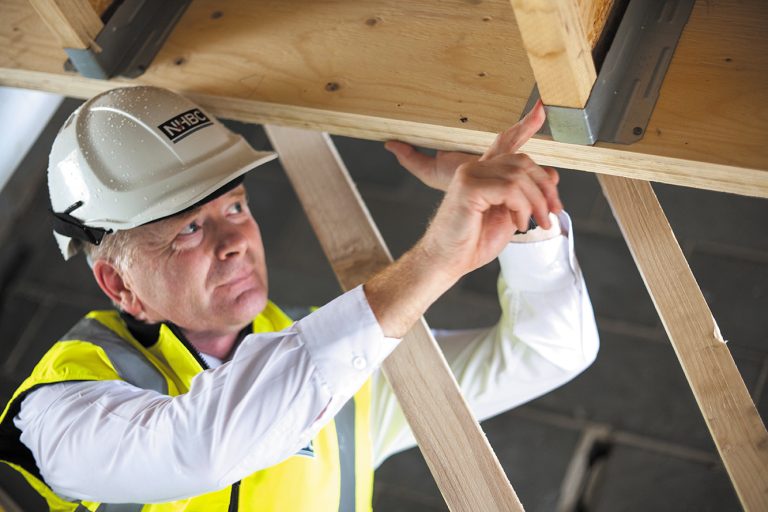Joinery businesses are the cheapest trade to set up, costing around £6,600 Self-employed plumbers recover their start-up costs the quickest – under six weeks Joinery businesses are among the cheapest trade companies to set up in the UK, averaging nearly £2,500 less than other sectors, new research has revealed. With over 40% of construction firms expected to make redundancies due to the virus[1], tradespeople may be considering going self-employed. IronmongeryDirect, the UK’s largest supplier of specialist ironmongery, has identified the cheapest industries in which to do so. The study added up the typical costs people pay when entering the UK’s four most popular trades[2] (joinery, building, electrical, plumbing), with everything from insurance to marketing. Joiners pay the least, with the average set-up fee totalling £6,642. With the typical daily rate for joiners around £150[3], these initial costs could be repaid within nine, five-day weeks. Despite being the most expensive businesses to set up, plumbers can expect to earn back their investment quickest, as they are able to charge the highest daily rates. Averaging nearly £350 a day[4], the £9,124 start-up cost could be repaid within six working weeks. The trade businesses which are the cheapest to set up in the UK are: 1) Joinery – £6,642 (repaid in nine weeks, £150 a day) 2) Building – £6,791 (nine weeks, £160 a day[5]) 3) Electrical – £6,873 (six weeks, £245 a day[6]) 4) Plumbing – £9,124 (six weeks, £347.50 a day) One of the most significant outgoings is accreditation. New plumbing companies pay the most in this department, with organisations like HETAS and OFTEC charging substantial sums for membership. Such credentials, combined with the cost of other important courses, like First Aid at Work, the Gas Safe Register and Asbestos Awareness, can set you back over £3,000, which is significantly more than other trades. Some expenses, however, are necessary across all sectors, such as insurance, marketing, company registration and van hire. A new trade business can expect to pay over £600 a year to completely cover themselves with insurance. Contractors All Risk insurance is one of the most costly forms of protection, starting at £298 a year, but includes cover against both property damage and third-party injury, so is worth the investment. Marketing is another significant outlay, but an important one nonetheless. Paying out for business cards, flyers, logo design and a new website usually costs at least £600 pounds. However, such costs will pay for themselves if they lead to a surge in new clients. Finally, there’s the crucial cost of equipment. A tradesperson may have accumulated tools during their career, but if they are new to the industry, there are tools they will need before taking on work. Joiners pay the most here, with key equipment adding up to £600. Circular and table saws are the biggest outlays, so it could be worth looking for second-hand retailers, whilst ensuring the products are high quality, as income will depend on their performance. The full breakdown of costs per trade is as follows: Type of Cost Joiner Builder Electrician Plumber Accreditation £1,005.00 £1,041.00 £1,005.00 £3,481.00 Trade Association £117.00 £472.80 £585.00 £231.00 Marketing £610.54 £610.54 £610.54 £610.54 Insurance £638.21 £638.21 £638.21 £638.21 Equipment £599.38 £355.97 £361.87 £490.98 Other (storage, van hire, business registration) £3,672.00 £3,672.00 £3,672.00 £3,672.00 Total £6,642 £6,791 £6,873 £9,124 Andy Porter, a self-employed carpenter from Southampton, has given his three top tips for people looking to set up their own trade business: 1) Look at local adverts and see what similar trades are doing (e.g. services, pricing) 2) Get quote and invoice terms and conditions in place early and make sure they are watertight 3) Make sure you have plenty of money saved up as cash flow is incredibly important Marco Verdonkschot, Managing Director at IronmongeryDirect and ElectricalDirect, said: “Many tradespeople will aim to run their own businesses one day, so it’s useful to get an idea of how much it would cost to do so. While these sums can appear quite daunting, most of the expenses will directly improve your service or help you win more work, so are worth the investment in the long run. “Owning your own business can be incredibly satisfying, so to help those who are considering going it alone, we’ve compiled a list of tips on how to do so effectively.” For eight pieces of advice from tradespeople who have set up their own business, visit: https://www.ironmongerydirect.co.uk/blog/eight-top-tips-for-setting-up-your-own-trades-business














